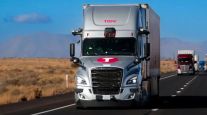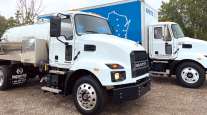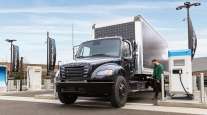Opinion: Technology — No Matter How Cool — Has to Pay Off
I am addicted to technology. At home I have a 3-D printer and a semi-autonomous drone aircraft. Amazon’s voice-controlled “Alexa” app manages my schedule, controls the lights in my house and plays games with my kids. Google’s Nest home services system features a thermostat that manages the temperature in our house and provides real-time security video of the property. And we have countless media streaming devices — computers, gaming systems, smart TVs and tablets.

Poduch
My children constantly ask me why I always crave the latest device or gadget, and I only have one response — because it’s cool.
However, to maintain profitability for my company I cannot purchase every industry-related technology I think is cool. And there are plenty. From autonomous vehicles, drones and electric trucks to integrated systems, software-as-a service platforms and apps, there are lots of cool things available, and more on the horizon.
Before you get swept up in the excitement and growing number of options, remember that the goal of any investment in technology should solve a specific problem and provide a return on investment. As you consider any technology investment, when you buy is just as critical as how much you spend.
For example, autonomous commercial vehicles are absolutely going to have an impact on the supply chain. First iterations will be adopted in a tested and proven form, such as platooning. With platooning, which the military has been testing and operating for a while, a lead vehicle is operated by a driver while trailing vehicles are autonomously controlled via a combination of radar, Lidar, GPS, Wi-Fi and camera systems. The trailing vehicles follow the actions of the lead vehicle, allowing for a single driver to control all of the vehicles in the platoon.
A window of opportunity now exists for platooning, as technological constraints, expense and legislation combine to prevent fully autonomous vehicles from reaching roads anytime soon. Platooning also could help improve public perception of autonomous technology because the vehicles are still ultimately controlled by a driver. In addition, some of the foundational technologies that enable platooning are already on trucks today and may enable autonomous trucks in the future.
Another example is the rapid development of electric commercial vehicles from Tesla, Nikola, Cummins and others. Many fleets already have electric vehicles for local operations, and we can expect them to expand to regional applications in a few years. Fueling stations, rest areas and trucks stops will start adding rapid charging ports or battery swap stations, speeding increased adoption of this energy source. Electric vehicle development has reached a point where the question is not if we will see widespread adoption but when.
However, before investing in these or any new technologies, you must thoroughly research your options. Start by asking how the technology is going to fit into your company:
• Does anyone in your company have basic knowledge about it?
• Have you discussed the technology with your manufacturer and supplier partners?
• Have you explored it with your internal “think tank?”
You also must explore how you will maintain these complex new systems:
• Do your technicians have the skills and tools to work on trucks with advanced technology?
• Are your IT teams building flexible enough infrastructures to integrate with the new systems?
Training with all stakeholders and end users will also become a big part of the equation, and the related expense and potential for operational disruption must be considered.
If you haven’t begun asking these questions and exploring technologies you may someday need, get started. Technology investment requires considerable capital expenditure and detailed planning. Adoption of emerging technology now will only enhance your capabilities later and help you streamline new practices that will someday be commonplace. It should be a regular discussion items in your five-, 10- and 20-year strategic plans. Make sure that these plans have specific goals for where your business is headed and how technology will get you there.
Also, maximize the value of your existing technology before plunging into the latest-and-greatest in the marketplace. Part of the evaluation process should include reviewing the technology that already exists in your operation and include determining if it is being used as effectively as possible.
Buying and implementing technology for technology’s sake is a “Keeping up with the Jones” mentality that could have a negative impact on your business. As cool and exciting as all this technology is, it can be overwhelming. Don’t just rush out and start spending. Stay informed about new products and concepts available near-term, and those merely in the talking stages. But be ready. Because the next big technological leap in trucking could be just what your company needs to stay ahead of the competition. And to me, there is nothing cooler than that.
Transervice Logistics Inc., headquartered in Lake Success, N.Y., provides customized transportation solutions including logistics, dedicated contract carriage, fleet leasing, contract maintenance and material handling equipment leasing and maintenance.




